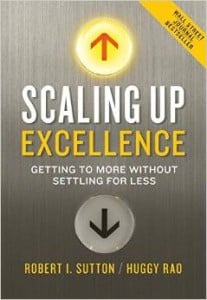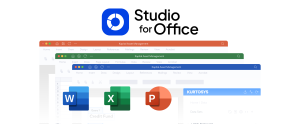I know a few of my colleagues were recently inspired during their last trip to San Francisco to attend what has become the “must go” True University event held by True Ventures. It’s designed specifically for executives and senior managers of start-ups and, I’d like to say, up-starts like Kurtosys. One keynote speech that was given during the day was that from Huggy Rao, co-author of Scaling Up Excellence, a book well worth the read and one that was given to me by one of the Kurtosys execs who attended.
 One of the chapters in the book really grabbed my attention and resonated with the things we here are Kurtosys are doing and hoping our customers—the world’s asset managers—are also trying to achieve. It centers on the concept of guardrails and customization.
One of the chapters in the book really grabbed my attention and resonated with the things we here are Kurtosys are doing and hoping our customers—the world’s asset managers—are also trying to achieve. It centers on the concept of guardrails and customization.
A guardrail is a simple concept that challenges you to question what are the important things that make up your business template – and therefore can’t be compromised. Customization is what you allow customers to play with, outside of the boundaries of your guardrails, to get the best results for them.
Here are ours at Kurtosys:
Guardrail: A common data model
Kurtosys has spent the last 2 years designing and implementing our Unified Data Model. But why? We believe that irrespective of geography, asset class or investment segment, the asset management industry (for the purposes of marketing and client servicing) can all fit into a single data model. Every asset management company in the world had previously thought differently—they needed something “special.” The thinking has now come around to a realization that this is now not necessary and basis points can be shaved off your TER if you adopt a template data model. That’s why we are proud of this investment. But the real message internally at Kurtosys is that this “common data model” cannot and will not be compromised. Instead, it is designed to be extended. It is designed to be fast. It is designed for marketing and, finally, is designed to have data services running against it. But the essence and structure of our Unified Data Model are strictly protected and will serve our customers well for decades.
Customization: Abstract away our customers “data/content sources”
Our customers have data that comes from many sources and often from outside their own four walls. The word “data” for marketers also has to include all types of content—documents, video and unstructured text, for example. A fundamental “guardrail” for Kurtosys is that all our customers will have a variety of data sources. So what our mantra? We ask our customers if they can provide data in “our” format and if they can’t we will convert it to our format in an automated way as and when it arrives. The “guardrail” around our business is that we never change our data model. Our customers benefit from the configurability and scalability of this without necessarily having to change every single content source that they present to us.
Guardrail: Have a standard set of web services/APIs
Universal web service and API structures allow us to build applications, tools and web apps with a regular and repeatable approach—standard ways for searching, querying, sorting, filtering, logging, authenticating, the list is long but STANDARD.
Customization: Allow design & branding
It’s simple. All our customers want the same things but they all do it differently. So we MUST allow them to build portals, tools, documents and websites with their own look and feel, navigation and behavior.
Guardrail: Write as little new code as possible
If we have to write new code, then it goes into our product and becomes part of the platform.
Customization: Make all of our software products “configurable”
I love our customers but when they say, “we are different” I have to work hard not to start an argument. So the compromise is this: make as many things configurable as possible and when you can’t have “switches” in your software then have an adjacent “outsource” or “managed” service that does it for them. For example, some of our customers need custom annotations placed on charts—randomly, now and again, and unplanned. You could spend $10 million writing configurable code to do this or you could do it for the customer manually. Doing it manually actually gives our customer a better service without compromising our guardrail.
We are very proud of our platform here at Kurtosys. But it’s the guardrails and customizations that make our business work for our customers — and allow us to scale. It’s much easier growing a business when you have worked these things out.



